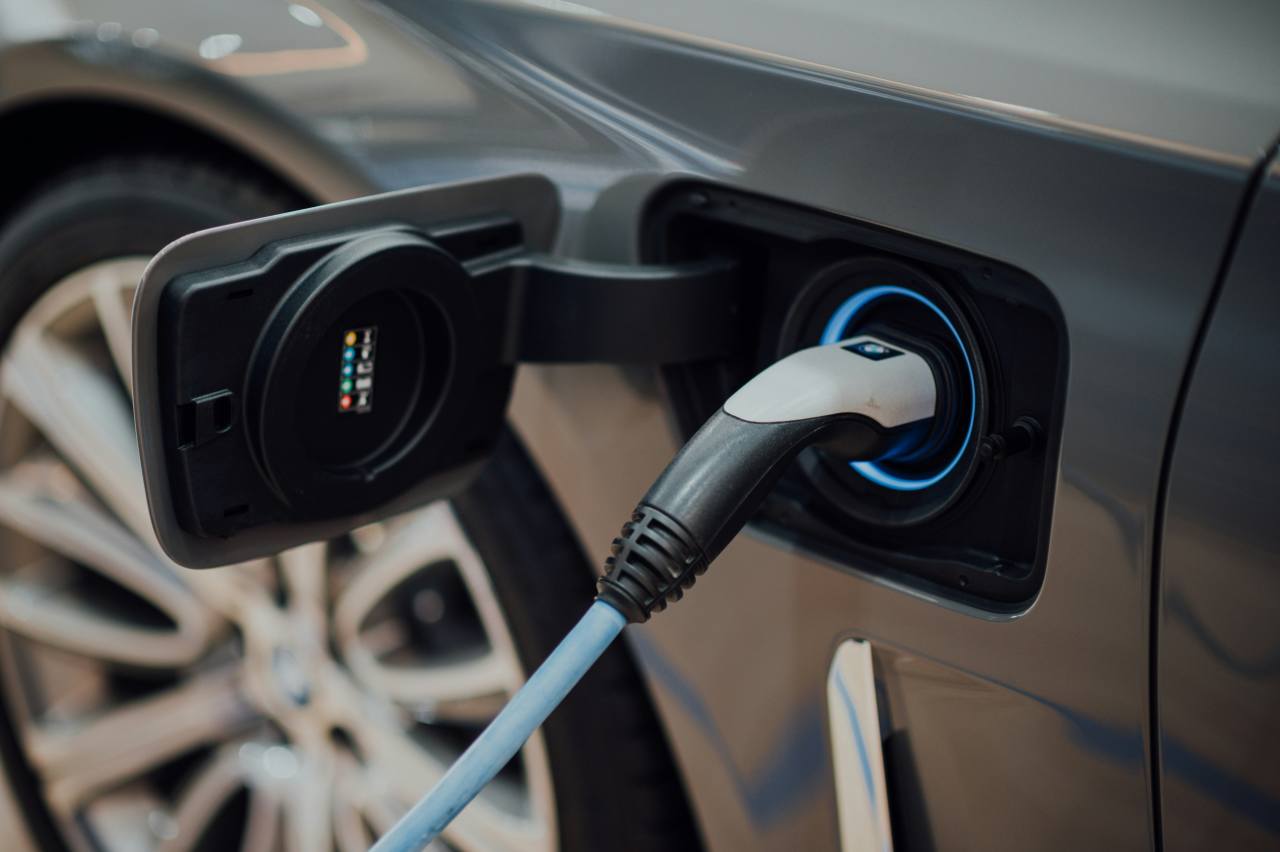A tidal wave of new all-electric vehicles continues to crash into Australia, but some brands still haven’t launched their first EVs. Lexus is one such brand - well, until now. Introducing the UX 300e.
As its name suggests, the UX 300e is a zero-emissions version of Lexus’ popular small SUV, the UX. And it’s already facing stiff competition in the form of the Mercedes-Benz EQA and Volvo XC40 Recharge Pure Electric, both of which launched earlier in 2021.
So, is the UX 300e the best of the premium bunch? Read on to find out.
Lexus UX300E 2022: Sports Luxury
| Engine Type | 0.0L |
|---|---|
| Fuel Type | Electric |
| Fuel Efficiency | 0.0L/100km (combined) |
| Seating | 5 |
| Price From | $60,720 - $69,740 |
| Safety Rating |
|
Does it represent good value for the price? What features does it come with?
The UX 300e is available in two grades: the entry-level Luxury and flagship Sports Luxury.

The Luxury undercuts the competition from $74,000, plus on-road costs, while the Sports Luxury commands a $7000 premium.
And in case you’re wondering, no, the UX 300e isn’t available in a familiar mid-range F Sport grade, but Lexus might decide to introduce one in the future.
Either way, standard equipment in the Luxury impressively includes LED lights, 17-inch alloy wheels, power-folding side mirrors with heating, roof rails, keyless entry, rear privacy glass and a hands-free power tailgate.

Inside, there's push-button start, a 10.3-inch multimedia system, satellite navigation, Apple CarPlay and Android Auto support, digital radio, a 13-speaker Mark Levinson sound system and a 7.0-inch multifunction display feature.
Then there’s wireless smartphone charging, a heated steering wheel with a power-adjustable column, eight-way power-adjustable front seats with heating and cooling, and heated rear outboard seats.
The Sports Luxury adds adaptive tri-beam LED headlights, 18-inch alloy wheels, a moonroof, a head-up display, ‘smooth’ leather-accented upholstery, a stitched 'Washi' instrument panel and 3D illuminated interior trim.

Needless to say, UX 300e buyers get a lot of bang for their buck.
Is there anything interesting about its design?
Lexus has tried to make a point with the UX 300e.
Most EVs look they’re from the future, even some of those based on internal-combustion models, but the UX 300e doesn’t.
Apparently, Lexus buyers just want EVs that look like traditional models, and the UX 300e is exactly that.
Yep, you’d be hard pressed to pick the difference between the UX 300e and any other UX variant, although there are some minor differences.
Up front, Lexus’ signature boomerang-style LED daytime running lights and ‘spindle’ grille are still there, although the latter features active shutters to improve aerodynamics – but you’d hardly ever notice them.
Around the side, the UX 300e’s sets of alloy wheels are unique – even though the 17s of the Luxury and 18s of the Sports Luxury look awfully familiar. And then there’s the ‘Electric’ lettering on the rear doors – in case you forgot what you signed up for.
At the rear, there’s the obligatory specific badging – and that’s it. The UX 300e still has those really cool 3D-style tail-lights, which are linked by a full-width light bar. Yep, it’s still the jacked-up hatchback (sorry, small SUV) many have come to know and love.

Inside, the theme continues, with only the instrumentation appropriately tweaked to suit the UX 300’e powertrain. Otherwise, it’s the same UX experience, which is no bad thing as the array of premium materials used creates a special ambience.
But that also means the Lexus’ old multimedia system carries over with its dreaded 'Remote Touch' touchpad controller. It’s well documented, but this set-up is frustrating to use, so much so that Lexus has moved on from it with its touchscreen-equipped next-generation models.
How practical is the space inside?
Measuring 4495mm long (with a 2640mm wheelbase), 1840mm wide and 1545mm tall, the UX 300e is on the larger side for a small SUV, but that doesn’t mean it’s practical across the board.
For example, its boot has a solid cargo capacity of 414L, which is greater than UX hybrid variants.
There’s no frunk or ‘froot’, but if you need additional storage space, the 60/40 split-fold rear bench can be stowed with the two manual release latches (easily accessed via the boot) to unleash the full (undisclosed) volume on offer.
That said, loading bulkier items is a challenge due to the tall load lip, although loose items can be secured with the two bag hooks and four tie-down points that are around the place.
Underfloor is enough room for at least one of the two onboard charging cables as well as the tyre repair kit – yep, there’s no space-saver or full-size spare wheel here.
In the highly positioned second row, the UX 300e arguably struggles the most. Behind my 184cm driving position, it’s not exactly spacious.
While there are a few centimetres of legroom, there’s barely enough headroom and absolutely no toe-room – plus a decent central tunnel to contend with.

Two adults can sit in the back on shorter journeys, but any longer and they’ll inevitably get cranky. Naturally, children will fare much better, but three abreast will be a squeeze.
Speaking of which, young kids are accommodated with three top-tether and two ISOFIX anchorage points for fitting child seats, a task that will likely require some Tetris skills.
Amenities-wise, there’s a fold-down armrest with two cupholders, but no door bins for additional bottle storage. Interestingly, there’s only one map pocket, on the front passenger’s seat backrest.
However, the rear of the centre console does feature directional air vents as well as two USB-C ports, so that’s a couple of steps in the right direction.

It’s not all bad news inside, though, as the first row is not only roomier, but also more complete. While the glove box can fit barely more than the manual, the central storage bin is nice and large, and features two USB-A ports and an auxiliary input.
Ahead is a pair of cupholders, which is followed by the wireless smartphone charger and a pop-up 12V power outlet. And yes, there are front doors bins that take a regular bottle each.
Warranty & Safety Rating
What safety equipment is fitted? What safety rating?
The UX 300e comes with a largely impressive safety suite.
Advanced driver-assist systems in the Luxury extend to front and rear autonomous emergency braking with pedestrian and daytime cyclist detection, active blind-spot monitoring and rear cross-traffic alert.
And then there’s lane-keep and steering assist, adaptive cruise control, road sign recognition, high-beam assist, tyre pressure monitoring, a reversing camera and front and rear parking sensors.
Meanwhile, the Sports Luxury also gets surround-view cameras.
Standard safety equipment also includes eight airbags, including knee coverage for the driver and front passenger.
While ANCAP is yet to crash test and, therefore, give the UX 300e a safety rating, all other variants of the UX were awarded the maximum five stars under its 2019 protocols, so the signs are good.
That said, it is missing intersection assist, emergency steering functionality and a front-centre airbag, all of which are scrutinised in 2021 and beyond.
What are the key stats for the powertrain?
The UX 300e has a front-mounted electric motor that produces 150kW of power and 300Nm of torque, making it the most potent UX derivative yet.
With a single-speed automatic transmission in tow, the UX 300e can sprint from a standstill to 100km/h in a warm 7.5 seconds.
But if you’re after a harder-hitting dual-motor powertrain with all-wheel drive, you’ll have to look elsewhere, as such a Lexus model doesn’t exist – yet.
How much does it consume? What’s the range like, and what it’s like to recharge/refuel?
The UX 300e’s 54.3kWh lithium-ion battery delivers a WLTP-certified driving range of 305km, which is more than 100km short of its segment’s average.
Of course, a larger battery option would cater to more buyers by offering a longer driving range, so time will tell if Lexus does, indeed, add one.
The UX 300e’s energy consumption on the combined-cycle test is, however, encouraging, at 15.0kWh/100km, but in my real-world testing – including some ‘spirited’ driving – I averaged a higher 16.9kWh/100km, which equates to 296km of driving range.
Needless to say, if you cover meaningful distances each week, you’ll be charging the UX 300e regularly.
Speaking of which, a 7kW AC charger with a Type 2 plug can fully charge the UX 300e’s battery in 6.5 hours, so overnight.
Good thing, then, that Lexus Australia will organise Jet Charge to install such a wallbox at the home of every UX 300e buyer and give them two cables as part of their purchase price.
Meanwhile, a 50kW DC fast charger with a less-common CHAdeMO plug can fully charge the UX 300e’s battery in 80 minutes.
And yes, Lexus Australia also throws in a three-year subscription to the largest public EV charging network in Australia, Chargefox, which is always a nice thing to have in your back pocket.
But if you need to travel long distances and don’t want to regularly stop to charge, Lexus Australia offers petrol- or hybrid-powered loan cars for four trips up to eight days in duration over the first three years of ownership, so at least you have that option, too.
What does it cost to own? What warranty is offered?
Like all Lexus Australia models sold from 2022, the UX 300e comes with a new five-year/unlimited-km warranty, which equals the premium benchmark.

That said, its battery is covered by a separate 10-year/unlimited-km term, while five years of roadside assistance is also included.
The UX 300e’s service intervals are average, at every 12 months or 15,000km, whichever comes first.
Handily, capped-price servicing means the first five visits cost $1475 in total, or an average of $295.
What's it like to drive?
Behind the wheel, the UX 300e is a real surprise packet.
Of course, being an all-electric vehicle, you’d expect it to have great acceleration, and it certainly does.
Off the line, the UX 300e is keen enough to be able to push its occupants into the backs of their seats, despite its relatively modest outputs.

But what’s more impressive is its overtaking ability. Want to most past a slow-moving vehicle? Stick your boot in and it will charge towards the horizon with vigour, even when making a move at high speed.
And when you need to slow down, regenerative braking is there to charge the battery while on the move. Four modes are on offer and can be permanently engaged by shifting the gear selector to B, but even the most aggressive one isn’t aggressive enough for me.
Lift off the accelerator and deceleration is gradual to say the least. As you get closer to a stop, it feels keener, but it’s a relatively slow process to get there.
This, of course, means you really have to time your lift offs well to be able to ‘one pedal’ drive, but even then, you can only get to about 3.0km/h before the brake pedal and, therefore, friction brakes need to be engaged to come to a standstill.

I’m a big proponent of ‘one pedal’ driving, so it’d be nice to see Lexus off the option of a truly aggressive setting that is more capable than the UX 300e’s regenerative braking currently offers.
That said, you quickly forget about that as soon as you reach a winding road, as the UX 300e is a hoot through the corners.
Now, I shouldn’t be as surprised as I am, given it’s based on Toyota’s beloved TNGA platform, but it is really, really fun to drive in the twisty stuff.
Turn in sharply at speed and the UX 300e exhibits little to no body roll, likely helped by the underfloor placement of its battery, which helps to reduce its centre of gravity.

Speaking of the all-electric powertrain, its configuration means the UX 300e has a better weight distribution than any other UX variant, and you can really tell the difference.
Push a little too hard, though, and understeer can make itself known, but we are talking about a front-wheel drive vehicle, so that goes without saying.
The steering plays a big role in making the UX 300e so enjoyable, with it offering a – I’m about to say it again – surprising amount of feel. It’s also well weighted in the Normal drive mode, so don’t bother with Sport.
At the same time, though, the ride is still comfortable over a variety of surfaces. It does have a firm edge due to its stiffer springs, but that’s not close to being a deal breaker.
And having driven both the Luxury and Sports Luxury, it’s hard to pick the difference between the 17s of the former and 18s (with lower-profile rubber) of the latter.
Being an all-electric vehicle, the UX 300e’s noise levels are more of a consideration due to its lack of an internal-combustion engine whirring away in the background.
Pleasingly, very little wind noise manages to penetrate the cabin, but tyre and general road noise are heard a little too easily. Good thing, then, that the pumping 13-speaker Mark Levinson sound system can always be turned up.
Verdict
As far as first-generation all-electric vehicles go, the UX 300e is on par.
If you’re a city dweller who rarely leaves the urban jungle, it could be the perfect fun-to-drive EV for you, especially the very well-equipped Luxury.
But for those that require longer driving range, there are already other options out there, like the EQA and XC40 Recharge Pure Electric.
Note: CarsGuide attended this event as a guest of the manufacturer, with travel, accommodation and meals provided.
Range and Specs
| Vehicle | Specs | Price* |
|---|---|---|
| ux300e Luxury | Electric, 1 SPEED AUTOMATIC | $55,660 - $64,020 |
| ux300e Sports Luxury | Electric, 1 SPEED AUTOMATIC | $60,720 - $69,740 |





















.jpg)























.png)








.jpg)
.jpg)
.jpg)
.jpg)
.jpg)



.jpg)
Comments